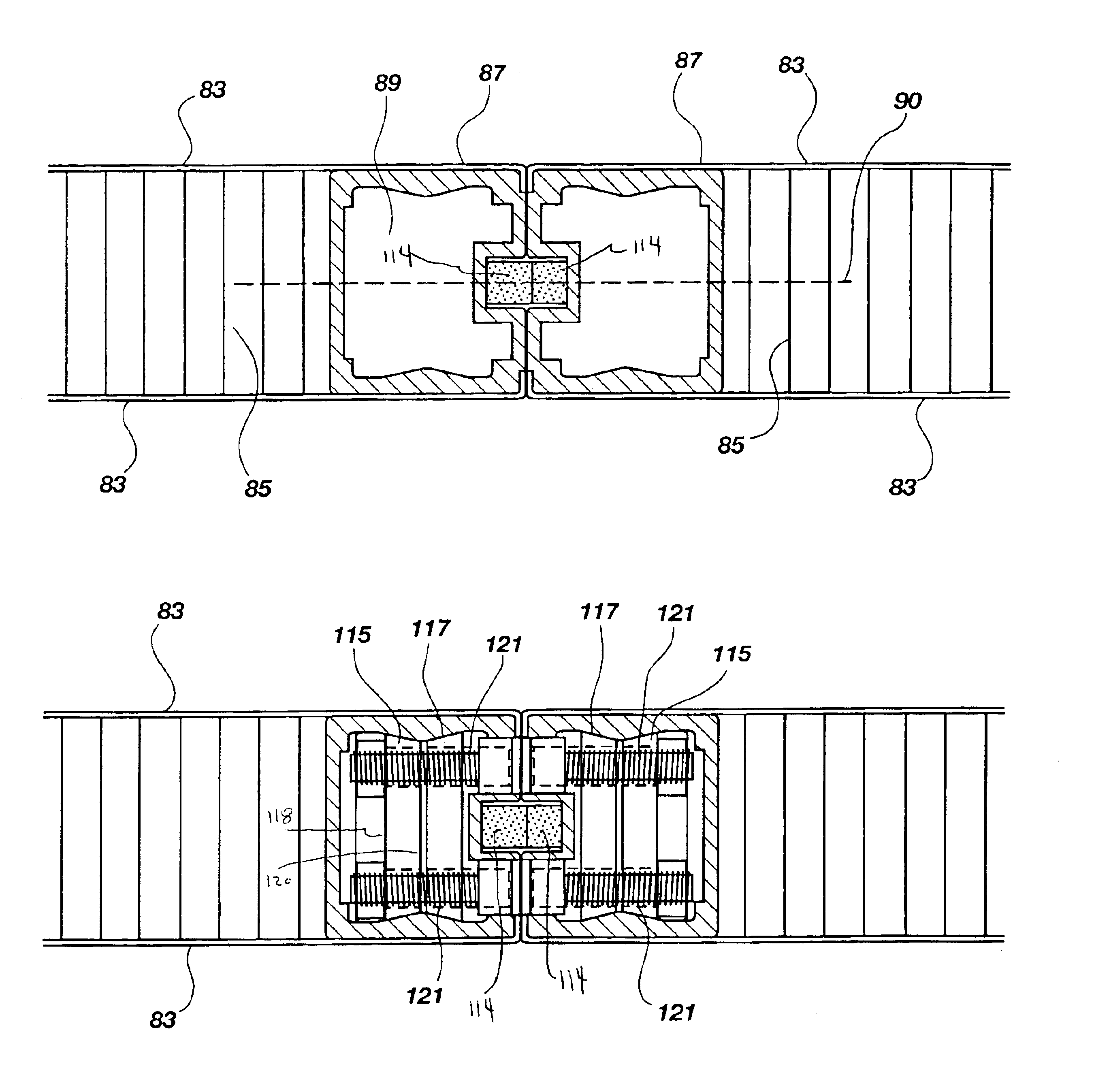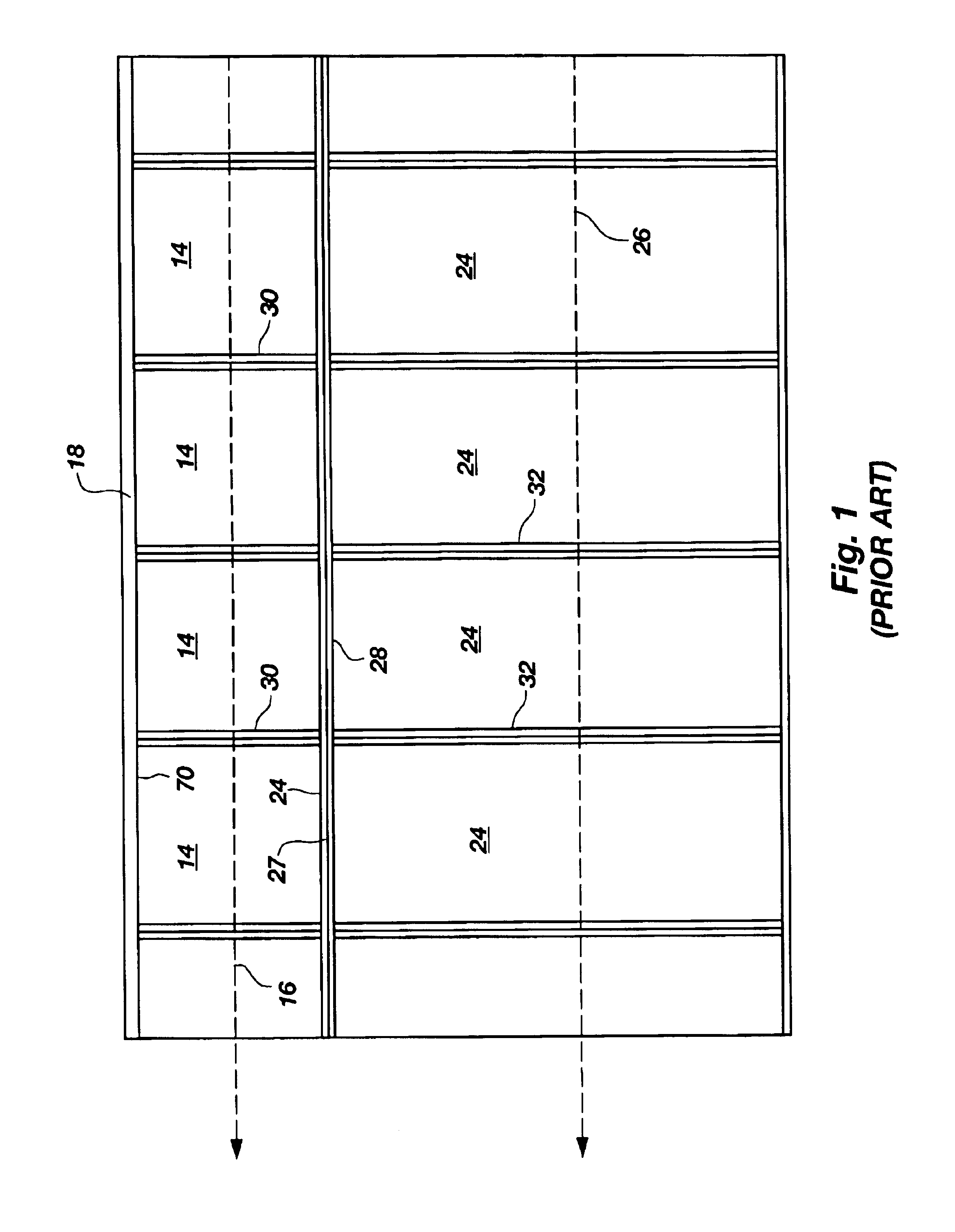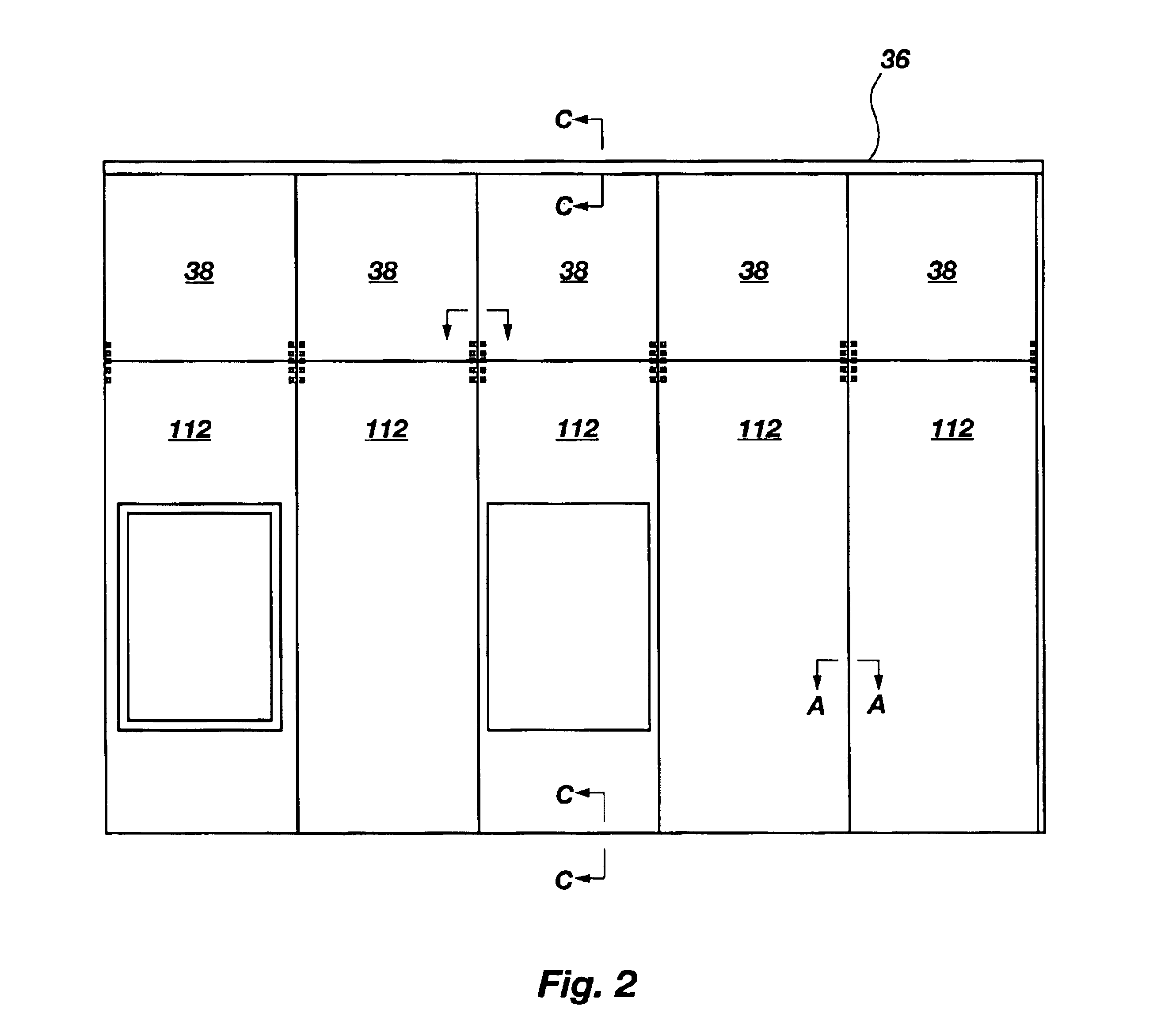Wall panel assembly and method of assembly
a technology of wall panels and components, applied in the direction of curtain suspension devices, wing arrangements, walls, etc., can solve the problems of large maintenance and construction costs of clean rooms, small clean rooms components may inadvertently drop onto the floor system, and increase the number of wall components and hardware required for a conventional construction. to achieve the effect of facilitating the releasable retention of connection elements
- Summary
- Abstract
- Description
- Claims
- Application Information
AI Technical Summary
Benefits of technology
Problems solved by technology
Method used
Image
Examples
Embodiment Construction
As shown in FIG. 1, a clean room wall panel assembly extant in the art includes a plurality of first panels 14 which are arranged contiguously side to side along a generally linear axis 16 oriented parallel to the ceiling header 18. The uppermost side 20 of each of the first panels 14 engages with the header 18. The opposing side 22 of each first panel 14 engages with a respective second panel 24 which is positioned elevationally below its respective first panel 14. The plurality of second panels are arranged contiguously side to side to form a linear array which extends along a second linear axis 26. Each of the joints or intersections between adjacent first panels, between adjacent first panels and second panels and between adjacent second panels is reinforced by a stiff batten stud element 28. As shown to advantage in FIG. 1 first battens 28 extend to cover the intersection of all of the first panels with their respective second panels. Individual battens 30 are positioned over t...
PUM
 Login to View More
Login to View More Abstract
Description
Claims
Application Information
 Login to View More
Login to View More - R&D
- Intellectual Property
- Life Sciences
- Materials
- Tech Scout
- Unparalleled Data Quality
- Higher Quality Content
- 60% Fewer Hallucinations
Browse by: Latest US Patents, China's latest patents, Technical Efficacy Thesaurus, Application Domain, Technology Topic, Popular Technical Reports.
© 2025 PatSnap. All rights reserved.Legal|Privacy policy|Modern Slavery Act Transparency Statement|Sitemap|About US| Contact US: help@patsnap.com



